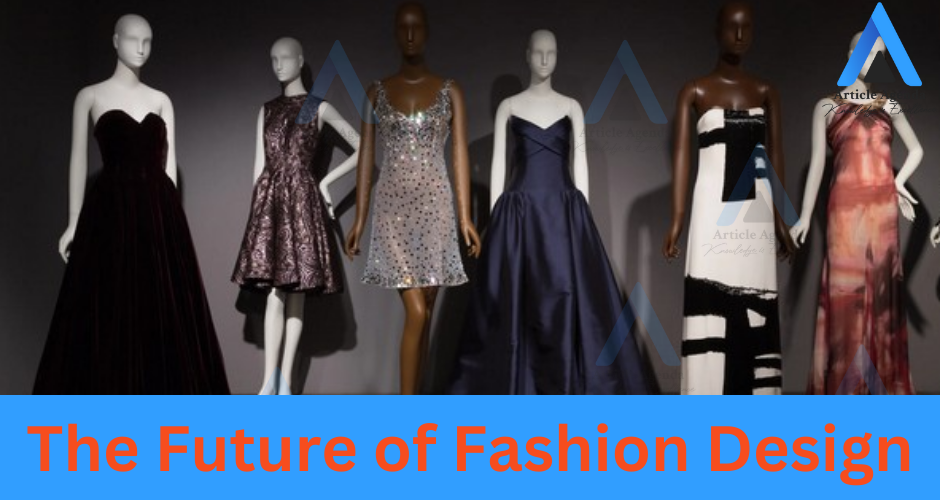Sustainable style, also known as eco-fashion or ethical fashion, refers to clothing and accessories fashion designed, produced, and consumed in an environmentally friendly and socially responsible way. It considers the entire lifecycle of a garment, from the sourcing of materials to the manufacturing process and even the disposal of the product. Sustainable fashion aims to minimize the negative impact on the environment and promote fair labour practices.
In the current climate crisis, sustainable fashion has become increasingly important. The fashion industry is one of the most significant contributors to environmental pollution and waste. The production of clothing involves using vast amounts of water, energy, and chemicals, contributing to greenhouse gas emissions and water pollution. Additionally, the fast fashion model, which encourages consumers to buy cheap, disposable clothing that is quickly discarded, further exacerbates the industry’s environmental impact.
Table of Contents
- The Environmental Impact of the Fashion Industry
- The Rise of Sustainable Fashion Brands
- The Benefits of Sustainable Fashion for Consumers
- The Role of Technology in Sustainable Fashion Design
- Sustainable Materials and Fabrics in Fashion Design
- The Importance of Ethical Production Practices in Fashion Design
- The Future of Sustainable Fashion: Innovations and Trends
- How Consumers Can Support Sustainable Fashion
- Conclusion: Embracing Sustainable Style for a Better Future
The Environmental Impact of the Fashion Industry
The fashion industry has a significant negative impact on the environment. According to the United Nations Environment Programme (UNEP), the fashion industry is responsible for 10% of global carbon emissions, more than all international flights and maritime shipping combined. It also consumes more energy than the aviation and shipping industries combined.
The fast fashion model, which emphasizes quick turnover of trends and low prices, has further intensified the fashion industry’s environmental impact. Fast fashion brands rapidly produce large quantities of clothing, often using cheap materials and labour. This leads to overproduction, excessive waste, and exploitation of workers in developing countries.
Read More: 10 Must-Have Fashion Items for Every Wardrobe
The Rise of Sustainable Fashion Brands
There has been a significant rise in sustainable fashion brands in recent years. These brands prioritize ethical and sustainable practices throughout their supply chains, from sourcing materials to manufacturing and distribution. They aim to create clothing that is both stylish and environmentally friendly.
Some examples of sustainable fashion brands include Patagonia, Eileen Fisher, and Stella McCartney. Patagonia is known for its commitment to using recycled materials and reducing waste. Eileen Fisher uses organic and sustainable fabrics and promotes fair labour practices. Stella McCartney is a pioneer in sustainable luxury fashion, using innovative materials such as vegan leather and recycled polyester.
The growth of sustainable fashion brands can be attributed to several factors:
- Consumers are increasingly aware of the fashion industry’s environmental and social impact. Consumers are becoming more conscious of purchasing decisions and actively seeking brands aligning with their values.
- There is a growing demand for sustainable products, particularly among younger generations prioritizing sustainability and social responsibility.
- Sustainable fashion brands can create stylish, high-quality clothing without compromising ethical and environmental standards.
Read More: How to Style Your Outfits Like a Fashion Pro
The Benefits of Sustainable Fashion for Consumers
Sustainable fashion offers several benefits for consumers. Firstly, sustainable clothing tends to be higher quality and longer-lasting than fast fashion. Sustainable brands prioritize craftsmanship and durability, resulting in clothing that withstand multiple wears and washes. This reduces the need for frequent replacements and saves consumers money in the long run.
In addition to the financial benefits, sustainable fashion also has health benefits for consumers. Fast technique often involves using toxic chemicals in the production process, such as dyes and finishes, that can harm the environment and human health. Sustainable fashion brands prioritize using natural and non-toxic materials, reducing the risk of exposure to harmful substances.
Furthermore, sustainable fashion promotes a more conscious and mindful approach to consumption. Investing in high-quality, ethically produced clothing encourages consumers to value their possessions and make more thoughtful purchasing decisions. This shift towards a more sustainable mindset can positively impact overall well-being and contribute to a more sustainable lifestyle.
Read More: The Best Fashion Brands for Affordable and Sustainable Clothing
The Role of Technology in Sustainable Fashion Design
Technology plays a crucial role in advancing sustainable fashion design. It enables designers and brands to explore innovative solutions and implement more sustainable practices throughout the supply chain. From sourcing materials to manufacturing processes, technology offers a range of tools and techniques that can reduce the fashion industry’s environmental impact.
One example of technology used sustainably is 3D printing. This technology allows designers to create prototypes and samples without the need for traditional manufacturing processes, which often involve wasteful practices. 3D printing also enables customization and on-demand production, reducing overproduction and waste.
Another example is using blockchain technology to track and verify the clothing supply chain. This ensures transparency and accountability, allowing consumers to make informed choices about the products they purchase. Blockchain technology can also help prevent counterfeiting and ensure fair labour practices throughout the supply chain.
Read More: Fashion Tips for Every Body Type
Sustainable Materials and Fabrics in Fashion Design
Sustainable fashion strongly emphasizes the use of environmentally friendly materials and fabrics. These materials are sourced and produced to minimize environmental harm and promote sustainability.
One example of a sustainable material is organic cotton. Organic cotton is grown without synthetic pesticides or fertilizers, reducing the environmental impact of cotton production. It also promotes biodiversity and supports the livelihoods of farmers in developing countries.
Another sustainable fabric is Tencel, made from wood pulp sourced from sustainably managed forests. Tencel production uses a closed-loop system, which recycles water and solvents, minimizing waste and pollution. Tencel is known for its softness, breathability, and biodegradability.
Read More: Fashion Tips for Every Body Type
The Importance of Ethical Production Practices in Fashion Design
Ethical production practices are a crucial aspect of sustainable fashion design. They ensure that workers are treated fairly, and their rights are respected throughout the supply chain. Ethical production practices include fair wages, safe working conditions, and the prohibition of child labour.
Sustainable fashion brands prioritize ethical production practices by partnering with suppliers and manufacturers who adhere to strict labour standards. They often work with certified factories and organizations that monitor and audit labour conditions. By promoting fair labour practices, sustainable fashion brands contribute to the overall well-being and empowerment of workers in the fashion industry.
Read More: Top 5 Best Silver Jewellery Pieces
The Future of Sustainable Fashion: Innovations and Trends
The future of sustainable fashion looks promising, with continued innovations and trends prioritizing sustainability and social responsibility. One of the key trends is the circular economy, which aims to minimize waste and maximize the use of resources. This involves designing products that can be easily recycled or repurposed and implementing take-back programs to ensure proper disposal.
Another trend is the use of innovative materials and technologies. For example, there is a growing interest in bio-based materials, such as fabrics made from algae or mushrooms. These materials are renewable, biodegradable, and have less environmental impact than traditional textiles.
Read More: Cheapest Online Shopping Sites in 2023
How Consumers Can Support Sustainable Fashion
Consumers play a crucial role in supporting sustainable fashion. Here are some tips for consumers to embrace sustainable style:
1. Educate yourself: Learn about the environmental and social impact of the fashion industry. Understand the importance of sustainable fashion and make informed purchasing decisions.
2. Choose quality over quantity: Invest in high-quality clothing designed to last. Avoid fast fashion trends and opt for timeless pieces that can be worn for years.
3. Buy from sustainable brands: Support brands prioritizing sustainability and ethical practices. Look for certifications and labels that indicate a brand’s commitment to sustainability.
4. Shop secondhand: Consider buying pre-loved clothing from thrift stores or online platforms. This extends the lifespan of clothing and reduces waste.
5. Take care of your clothes: Follow proper instructions to ensure your clothing lasts longer. Mend and repair items instead of discarding them.
6. Recycle and donate: When you no longer need a garment, consider recycling it or donating it to a local charity. This ensures the clothing is correctly disposed of or given a second life.
Conclusion: Embracing Sustainable Style for a Better Future
In conclusion, sustainable fashion is the future of fashion design. It offers a more environmentally friendly and socially responsible alternative to the fast fashion model. By prioritizing ethical production practices, using sustainable materials, and embracing innovative technologies, sustainable fashion brands lead the way towards a more sustainable and conscious fashion industry.
Consumers have a crucial role to play in supporting sustainable fashion. By making informed purchasing decisions, choosing quality over quantity, and supporting sustainable brands, consumers can contribute to a more sustainable future. Embracing sustainable style is beneficial for the environment and consumers, as it promotes higher quality clothing, better health, and cost-effectiveness. Together, we can create a fashion industry that is both stylish and sustainable, ensuring a better future for generations to come.
Latest Post:
-
Smart Home Appliances in the UAE: Revolutionizing Modern Living
The UAE has long been recognized as a hub for innovation and technological advancement, and the adoption of smart home appliances is no exception. As the nation embraces the concept of smart homes, residents are experiencing a transformation in their daily lives, characterized by increased convenience, efficiency, and sustainability. This article explores how smart home…
-
(Artificial Intelligence) AI and ML (Machine Learning) : Transforming the Future
Artificial Intelligence (AI) and Machine Learning (ML) are two of the most transformative technologies of our time. They are reshaping industries, driving innovation, and opening up new possibilities in ways previously unimaginable. This article explores the fundamentals of AI and ML, their applications, and their profound impact on various sectors. Understanding Artificial Intelligence (AI) What…
-
Digital Marketing Services: Transforming Your Business in the Digital Age
In today’s digital-first world, businesses must leverage digital marketing services to remain competitive, attract customers, and drive growth. Digital marketing encompasses a broad range of tactics and strategies aimed at promoting products or services through digital channels. This article delves into the various types of digital marketing services available, their benefits, and how businesses can…





daktilogibigibi.rhqb854PUGiw
daxktilogibigibi.e9ojbwahxnXh
grews xyandanxvurulmus.XPYHL2T0cLLE
porno siteleri wrtgdfgdfgdqq.eqL67D2oW8gk
childrens sex pompadirha.YLkvjcynqaRs
seksi siteler asillartaklitler.FwcRcxVK9Sj0
porno hepxhupx.9dHUNHcRaXaC
eskort siteleri juljulfbi.DKjclcODk1q8
house porn vvsetohimalxxvc.HxqC6LBElMKI
free hd prons gghkyogg.RcKAl7MWhE6
hd best porn ggjennifegg.yD9dbDrEXEk
fashionflag porn video 4k fashionflag.eWw7Bp14dG1
goodhere Funny Sex porn vurucutewet.hVWFoRRk6XI
ladyandtherose Teens porn backlinkseox.CXSuYkxjJmQ
jenniferroy 有名人のポルノ japanesexxporns.pPyGtJh5f1Q
landuse Asian porn lancdcuse.HVcACa3zd0j
falbobrospizzamadison Funny Porn jkkıjxxx.0AQRhm0f2Kj
मजेदार अश्लील qqyyooppxx.Wixd3nuBMdr
मजेदार अश्लीलता के बा hjkvbasdfzxzz.nxGJpaMcKbC
मजेदार सेक्स पोर्न hkyonet.jMMBw3VNeJi
ਗੇ ਪੋਰਨ madisonivysex.cP5rR9YH6Xj
ladesbet ਸ਼ੁਕੀਨ ਪੋਰਨ ladesinemi.03DPT79RDH8
ladesbet 熟女 (40 ) ポルノ ladestinemi.Y3flcwk1RSD
[url=https://valtrexarb.online/]valtrex tablets over the counter[/url]
[url=http://sildenafilps.online/]viagra online with prescription[/url]
[url=https://ibaclofen.com/]lioresal 10 tablet[/url]
おばあちゃんポルノ .pmRn1rYBdcD
ਰੂਸੀ ਪੋਰਨੋਗ੍ਰਾਫੀ .ppSlX6G6Jok
ਕਮ ਸ਼ਾਟ ਪੋਰਨ .OxzaJbryEab
ハメ撮りポルノ .DGE9tEQBfnN
ਕਮ ਸ਼ਾਟ ਪੋਰਨ .anWNyfpszSH
https://nuyrkpa.knitfit.info/ .1uMYnWfGQY1
Rattling excellent information can be found on web blog.Money from blog